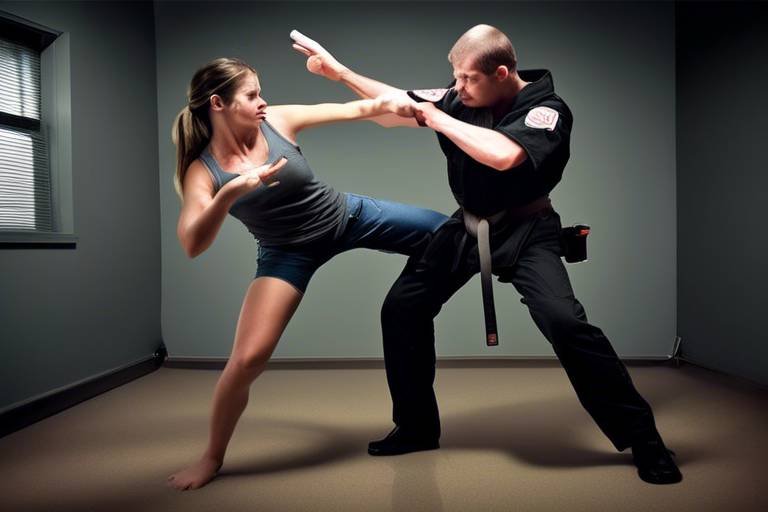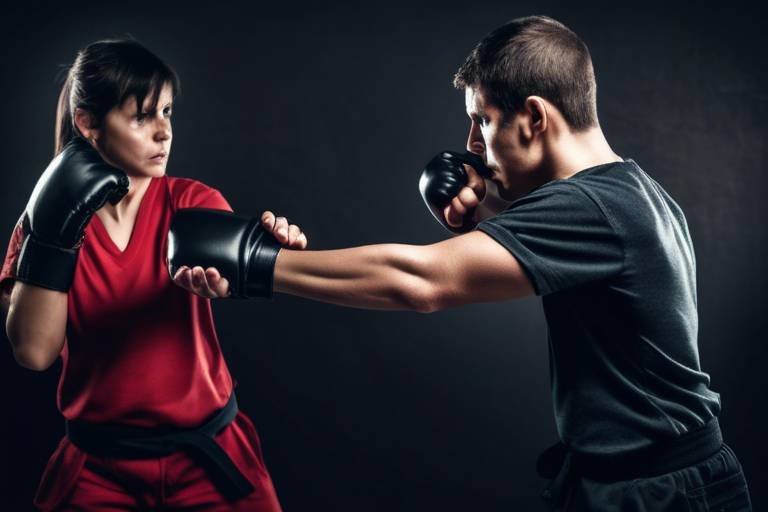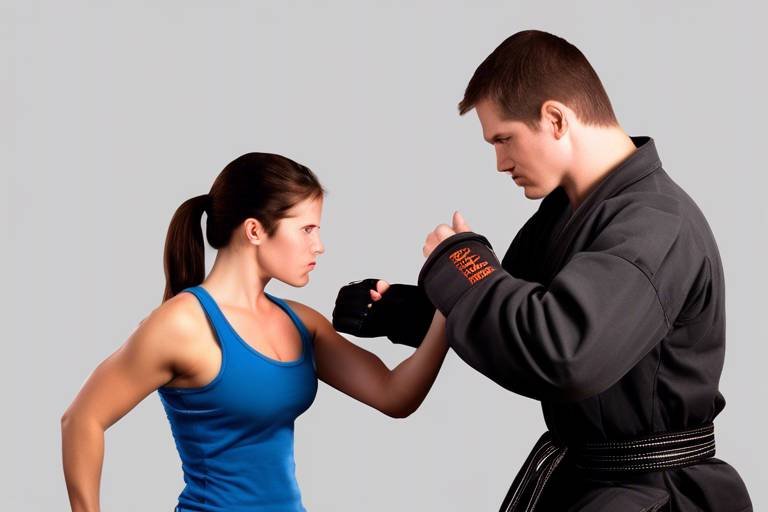Core Strength and Its Importance in Self-Defense Training
When it comes to self-defense training, one might think of techniques, strategies, and maybe even the right gear. However, the foundation of effective self-defense lies in something often overlooked: core strength. You might be wondering, why is core strength so crucial? Well, your core is essentially the powerhouse of your body, providing stability, balance, and power for every movement you make. Imagine trying to build a house on a shaky foundation—no matter how beautiful the house is, it won't stand for long. Similarly, without a strong core, your self-defense skills can easily crumble under pressure.
In self-defense scenarios, the ability to maintain balance while executing techniques is paramount. A strong core not only aids in keeping you upright during a confrontation but also enhances your ability to generate force. Think of it like a tree in a storm; a tree with deep roots (a strong core) can withstand fierce winds, while a weak tree (a weak core) might easily topple over. This article will delve into the significance of core strength in self-defense training, exploring its benefits, techniques to improve it, and how it contributes to your overall physical performance and safety.
Understanding how core strength enhances stability, balance, and power is crucial for effective self-defense. Your core comprises several muscle groups, including the abdominals, obliques, and lower back, all of which work together to stabilize your body. When you’re faced with a potential threat, having a strong core allows you to react swiftly and effectively. For instance, if someone tries to push you, your core strength helps you maintain your balance, making it harder for them to knock you off your feet. It’s like having an invisible shield that keeps you grounded.
Moreover, a robust core enables you to execute defensive maneuvers with greater efficiency. Whether it’s a swift jab, a kick, or a defensive block, the power generated from your core translates into your limbs. This means that every strike you deliver or block you make is more impactful when your core is strong. In essence, your core acts as the central hub from which all your movements originate, making it a critical component in self-defense training.
Core training offers numerous advantages, including improved posture, reduced injury risk, and enhanced athletic performance. These benefits are not just abstract concepts; they have real-world implications for self-defense practitioners. For instance, better posture from core strengthening not only makes you look more confident but also allows for quicker reactions during a confrontation. A strong core also minimizes the risk of injuries, which is essential when practicing self-defense techniques that may involve sudden twists and turns.
A strong core contributes significantly to balance and stability, which are essential for executing self-defense techniques effectively. Imagine trying to perform a roundhouse kick without a solid base; it would be challenging, if not impossible. This subsection examines exercises that enhance these attributes for better performance. Incorporating activities like planks, bridges, and stability ball exercises can dramatically improve your balance, allowing for quicker, more agile movements during self-defense situations.
Incorporating specific exercises can boost balance, aiding in quick movements during self-defense. Some effective exercises include:
- Single-leg stands: Great for improving balance and proprioception.
- Balance boards: These can challenge your stability and engage your core.
- Yoga poses: Poses like Tree Pose or Warrior III are excellent for enhancing balance.
Stability training is integral to developing core strength. Exercises like medicine ball throws, stability ball rollouts, and resistance band rotations can significantly enhance your core stability. By incorporating these into your self-defense training routine, you not only build strength but also improve your ability to maintain control during dynamic movements.
Core strength is crucial for generating power in self-defense techniques. When you punch or kick, the force doesn’t just come from your arms or legs; it originates from your core. This subsection discusses how a strong core translates into more effective strikes and defensive actions. Think of your body as a coiled spring; the tighter you coil it (the stronger your core), the more explosive the release (the power of your strike). By focusing on core strength, you can significantly enhance your striking power, making you a more formidable opponent.
This section provides a variety of exercises specifically designed to strengthen the core, focusing on methods that are particularly beneficial for self-defense practitioners. From bodyweight movements to weighted exercises, there are numerous ways to enhance your core strength.
Bodyweight exercises are accessible and effective for building core strength. Key movements like push-ups, planks, and mountain climbers can easily be integrated into self-defense training routines. These exercises not only strengthen your core but also improve your overall body control, which is essential in a self-defense scenario.
Incorporating weights into core training can enhance strength even further. Weighted exercises such as overhead presses, Russian twists, and kettlebell swings can provide additional resistance, leading to greater muscle engagement. This increased strength will directly translate to improved performance in self-defense techniques, allowing you to react faster and strike harder.
Q: How often should I train my core for self-defense?
A: Ideally, you should incorporate core training into your routine at least 2-3 times a week, alongside your regular self-defense practice.
Q: Can I do core exercises at home?
A: Absolutely! Many effective core exercises require minimal or no equipment, making them perfect for home workouts.
Q: What if I have a pre-existing injury?
A: Always consult with a healthcare professional before starting any new exercise routine, especially if you have existing injuries.
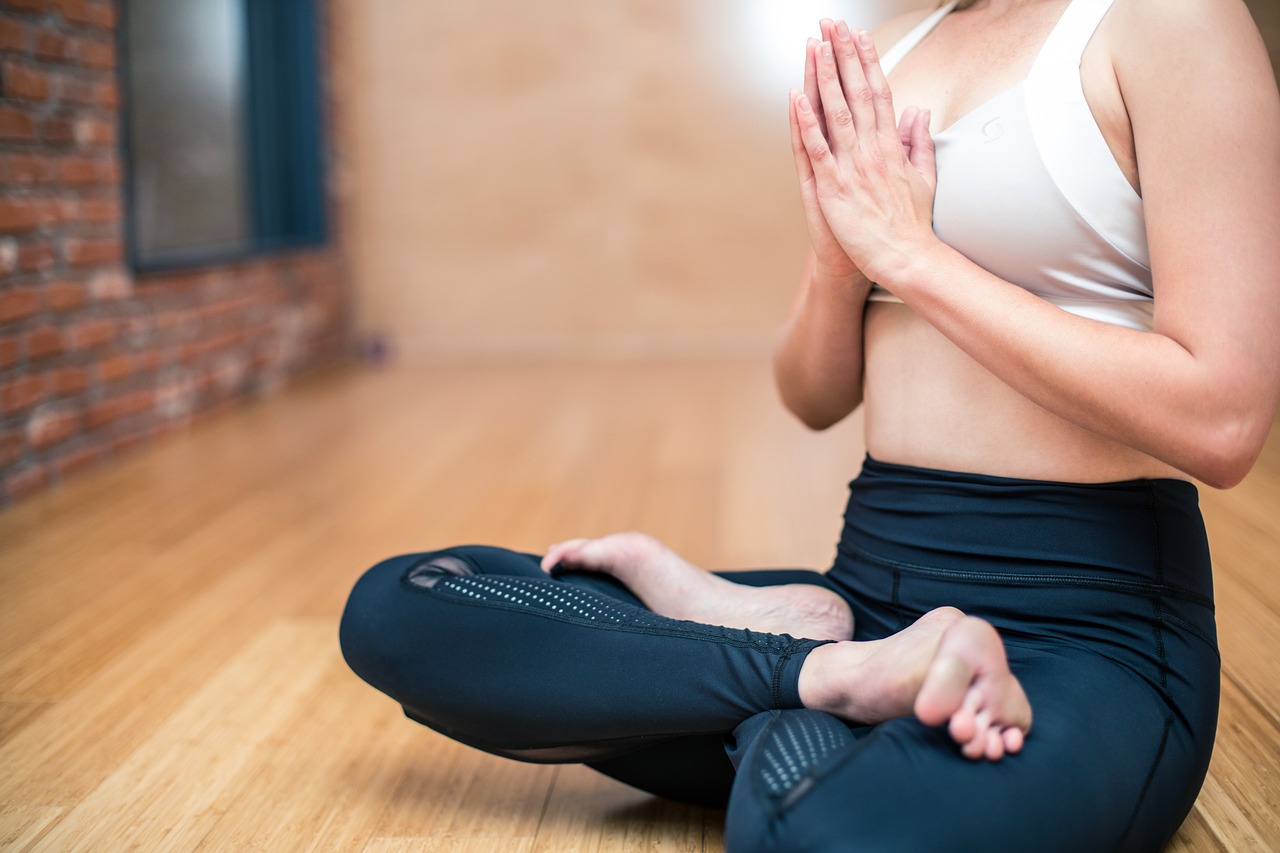
The Role of Core Strength in Self-Defense
When it comes to self-defense, many people often think of techniques, strategies, and physical prowess. However, one of the most crucial components that can make or break your effectiveness in a self-defense situation is core strength. Imagine your core as the foundation of a house; if it’s weak, everything built on top is at risk of collapsing. A strong core enhances your stability, balance, and power, allowing you to execute defensive maneuvers with precision and confidence.
Your core is not just about having a six-pack; it comprises a complex group of muscles that include the abdominals, obliques, lower back, and pelvic floor. Together, they work to stabilize your body during movement. When you engage in self-defense techniques, a strong core helps maintain your center of gravity, making it easier to stay grounded and react swiftly. Think of it like the trunk of a tree; a solid trunk supports the branches, allowing them to sway and move without toppling over.
Furthermore, core strength plays a vital role in generating power. Most self-defense techniques require explosive movements, whether it’s a punch, kick, or even a quick escape maneuver. If your core is strong, you can transfer energy from your lower body through your upper body more efficiently, resulting in more powerful strikes. For instance, when throwing a punch, it’s not just your arm that does the work; it’s your entire body working in unison, starting from your feet, through your core, and finally extending to your fist. Without that core strength, your strikes can lack the force needed to deter an attacker.
In addition to enhancing performance, core strength significantly reduces the risk of injury. Self-defense situations can be unpredictable and physically demanding. A robust core stabilizes your spine and pelvis, minimizing the chances of strains or sprains during sudden movements. When you have a strong core, you’re better equipped to handle the physical stress of self-defense scenarios. This is why many self-defense training programs emphasize core workouts as a foundational element of their curriculum.
In summary, the role of core strength in self-defense cannot be overstated. It’s the bedrock upon which effective techniques are built. By focusing on developing a strong core, you not only improve your physical capabilities but also enhance your confidence and readiness to face any situation. Whether you’re a seasoned martial artist or just starting your self-defense journey, prioritizing core strength will undoubtedly elevate your skills and performance.
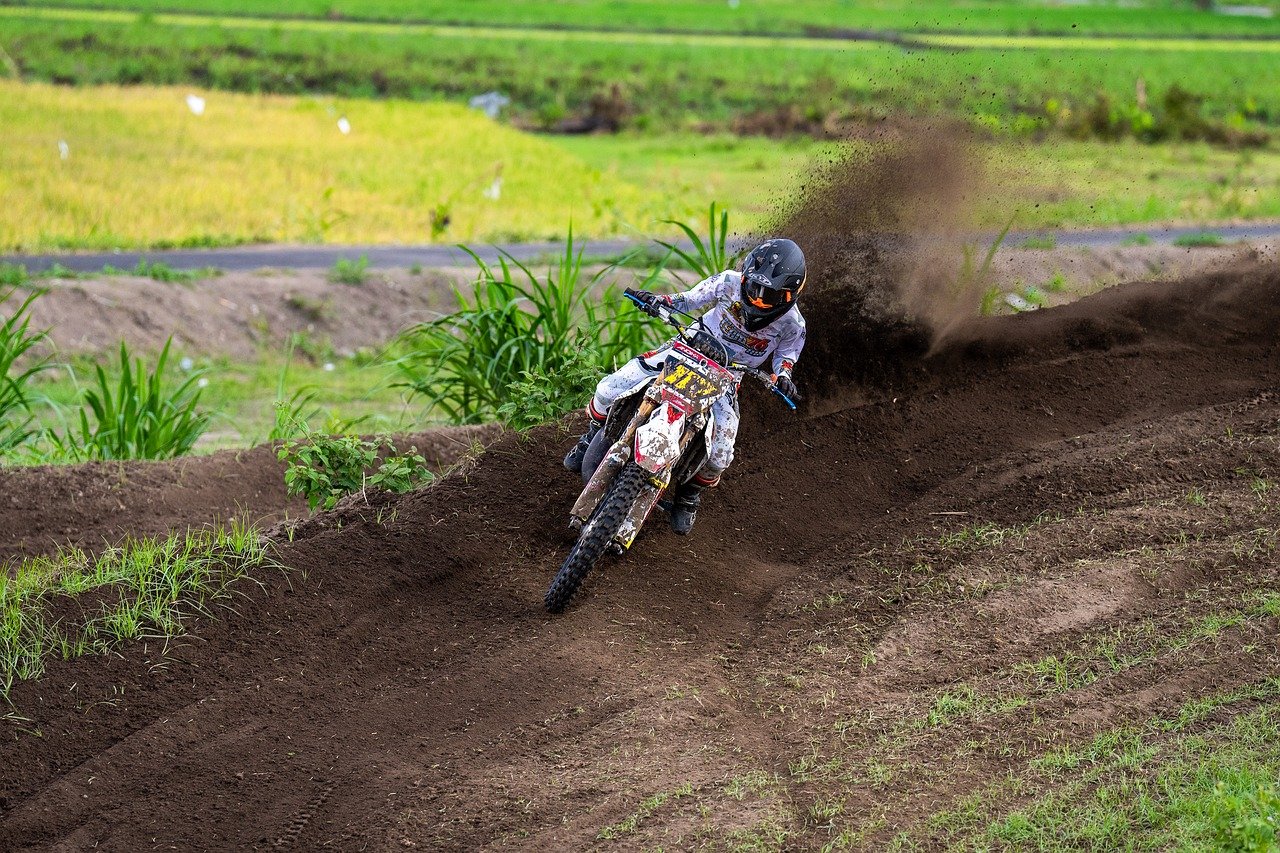
Benefits of Core Training
When it comes to self-defense, having a strong core isn't just about looking good in a swimsuit; it's about enhancing your overall performance and safety. A well-developed core acts as the body's powerhouse, providing the necessary strength and stability for various movements. Imagine trying to perform a powerful punch or a swift kick without a solid foundation—it's like trying to build a house on sand. Core training not only fortifies this foundation but also translates into tangible benefits that can be crucial in real-life self-defense scenarios.
One of the most significant advantages of core training is improved posture. Good posture not only makes you look confident but also allows for better movement efficiency. When your spine is aligned and your muscles are engaged, you're less likely to suffer from fatigue and more likely to execute techniques with precision. This is particularly important in self-defense, where every second counts, and being able to react swiftly can mean the difference between safety and danger.
Another key benefit is the reduced risk of injury. A strong core helps protect your back and other vital areas by distributing the stresses of movement evenly across your body. This is especially relevant in self-defense training, where you may be subjected to sudden twists, turns, and impacts. By reinforcing your core, you create a natural armor that absorbs shock and minimizes the likelihood of strains or sprains. Think of it as a protective shield that keeps your body safe while you learn to defend yourself.
Furthermore, core training enhances athletic performance across the board. Whether you're running, jumping, or grappling, a strong core provides the necessary support for explosive movements. This is particularly applicable in self-defense, where power generation is crucial. The stronger your core, the more force you can generate behind your strikes, making them more effective. It's like having a turbocharger in a car; it gives you that extra boost when you need it most.
To summarize, the benefits of core training in self-defense extend far beyond aesthetics. They include:
- Improved Posture: Enhances movement efficiency and confidence.
- Reduced Injury Risk: Protects vital areas and minimizes strains.
- Enhanced Athletic Performance: Supports explosive movements and power generation.
Incorporating core training into your self-defense routine can provide a solid foundation for all your physical activities. Whether you’re a seasoned martial artist or just starting out, investing time in core strength will pay off in more ways than one. So, the next time you hit the gym or your training mat, remember that every crunch, plank, and twist is not just building muscle; it’s building your confidence and readiness to face any challenge that comes your way.
Q1: How often should I train my core for self-defense?
A1: Ideally, you should incorporate core training into your routine at least 2-3 times a week. This allows for adequate recovery while continually building strength.
Q2: Can I do core exercises at home without equipment?
A2: Absolutely! Many effective core exercises, such as planks, sit-ups, and bicycle crunches, can be performed at home using just your body weight.
Q3: Is core strength training suitable for beginners?
A3: Yes, core strength training is suitable for all fitness levels. Start with basic exercises and gradually increase intensity as your strength improves.
Q4: How long will it take to see results from core training?
A4: Results can vary, but with consistent training, many people notice improvements in strength and stability within a few weeks.
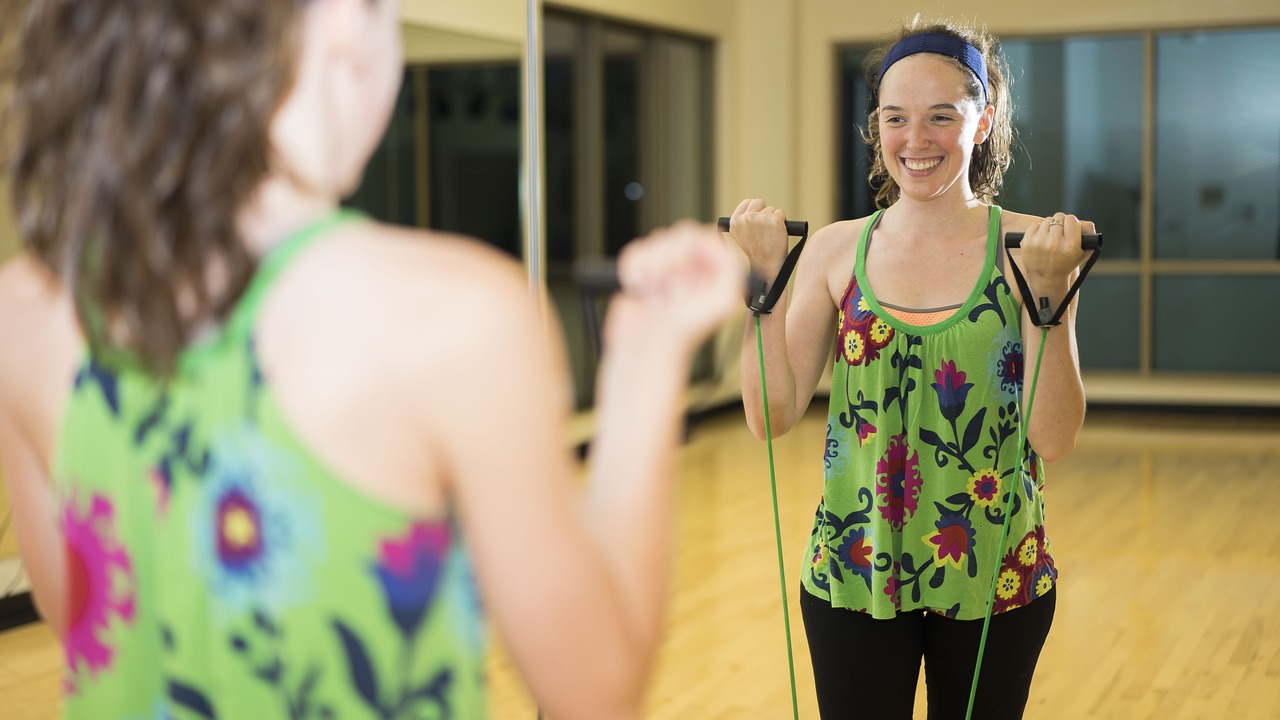
Improved Balance and Stability
When it comes to self-defense, having is not just a luxury; it's a necessity. Imagine trying to fend off an attacker while wobbling like a newborn deer on ice! A strong core acts as the foundation of your body, allowing you to maintain your center of gravity and execute techniques with precision. Without this core strength, your movements can become sluggish and ineffective, potentially leaving you vulnerable in a critical situation.
Think of your core as the trunk of a tree. Just as a tree needs a sturdy trunk to stand tall against the wind, you need a solid core to remain stable during self-defense maneuvers. When your core is strong, you can pivot, shift, and react swiftly, making it easier to dodge attacks or counter with your own. This is why many self-defense instructors emphasize core training as a vital component of their programs.
To enhance your balance and stability, incorporating specific exercises into your routine is essential. For instance, exercises like planks, side lunges, and single-leg stands can significantly improve your ability to maintain balance while executing complex movements. These exercises challenge your body to stabilize itself, mimicking the unpredictable nature of real-life confrontations.
Furthermore, stability training techniques, such as using a balance board or performing yoga poses, can also contribute to your overall core strength. These methods not only fortify your core but also enhance your proprioception—your body's ability to sense its position in space. This heightened awareness is crucial during self-defense scenarios, allowing you to react instinctively and confidently.
In summary, improving your balance and stability through core training is a game-changer in self-defense. By focusing on these attributes, you equip yourself with the tools necessary to respond effectively in high-pressure situations. Whether you're facing an opponent in a controlled environment or an unexpected encounter on the street, a strong core will provide the stability you need to defend yourself successfully.
- What are some quick exercises I can do to improve my core strength?
Simple exercises like planks, Russian twists, and bicycle crunches can be done anywhere and are effective for building core strength.
- How often should I train my core for self-defense?
Incorporating core training into your routine 2-3 times a week can yield significant improvements in balance and stability.
- Can core training help prevent injuries?
Absolutely! A strong core stabilizes your body, reducing the risk of injuries during physical activities, including self-defense.

Exercises for Balance
When it comes to self-defense, having a strong core is just the tip of the iceberg. The real magic happens when you combine that core strength with balance. Imagine trying to execute a powerful kick or a swift pivot without your body being stable; it’s like trying to stand on a rocking boat! That’s why incorporating balance exercises into your routine is essential. Not only do they enhance your ability to maintain control during defensive maneuvers, but they also help you evade potential threats more effectively.
One of the most effective ways to improve your balance is through a variety of exercises that challenge your stability. These exercises can be easily integrated into your self-defense training and can be performed almost anywhere. For instance, consider the classic single-leg stand. This exercise not only engages your core but also forces you to stabilize your body on one leg, mimicking the conditions you might face in a real-life situation. Try standing on one leg for 30 seconds, then switch. As you progress, you can close your eyes or perform small movements with your free leg to increase the difficulty.
Another fantastic exercise is the balance beam walk. If you don’t have a balance beam, a straight line on the ground will work just fine. Walk heel-to-toe along the line, focusing on maintaining your balance with each step. This exercise not only improves your balance but also enhances your concentration and body awareness, which are crucial during self-defense scenarios.
Incorporating dynamic movements into your balance training can also yield significant benefits. For example, try performing a lunge with a twist. Step forward into a lunge position and twist your torso towards the front leg. This exercise engages your core while challenging your balance and stability, making it a perfect addition to your self-defense training routine.
Here’s a quick overview of some effective balance exercises you might consider adding to your training:
- Single-leg stand
- Balance beam walk
- Lunge with a twist
- Side leg raises
- Stability ball exercises
Lastly, don’t underestimate the power of yoga and tai chi. Both practices emphasize balance, flexibility, and core strength, making them excellent complements to any self-defense training regimen. By integrating these exercises into your routine, you’ll not only improve your balance but also enhance your overall physical performance, making you a more formidable opponent in any self-defense situation.
Q: How often should I practice balance exercises?
A: Ideally, you should incorporate balance exercises into your training routine at least 2-3 times a week. Consistency is key to seeing improvement.
Q: Can I do balance exercises at home?
A: Absolutely! Many balance exercises require little to no equipment, making them perfect for home workouts. You can use a sturdy chair or wall for support as you build your confidence.
Q: Will improving my balance help me in other sports?
A: Yes! Improved balance translates to better performance in virtually any sport, from martial arts to running, as it enhances your overall stability and coordination.

Stability Training Techniques
When it comes to self-defense, having a strong and stable core isn't just a luxury—it's a necessity. Stability training techniques are paramount for anyone looking to improve their self-defense skills. Think of your core as the foundation of a house; if the foundation is weak, the entire structure is at risk. By incorporating specific stability exercises into your training regimen, you can enhance your ability to maintain balance during high-stress situations, which is crucial for effective defensive maneuvers.
One of the most effective stability training techniques is the plank. This exercise not only engages your entire core but also helps to improve your overall body awareness. To perform a plank, lie face down, then raise your body off the ground, supporting yourself on your elbows and toes. Keep your body in a straight line, engaging your abdominal muscles and holding the position for as long as possible. As you progress, try variations like side planks or plank jacks to challenge your stability further.
Another fantastic exercise is the single-leg balance. This technique is particularly beneficial for self-defense, as it mimics the need to maintain balance while moving or reacting to an opponent. To perform this exercise, simply stand on one leg while keeping the other leg raised slightly off the ground. For an added challenge, close your eyes or try to touch your toes with your opposite hand. This not only improves your balance but also enhances your proprioception, which is your body’s ability to sense its position and movement in space.
Incorporating stability balls into your training can also yield significant benefits. Exercises like the stability ball roll-out or the stability ball pass engage your core while forcing you to stabilize your body against an unstable surface. This not only builds strength but also improves your body’s ability to react quickly in self-defense scenarios. The instability of the ball requires constant adjustments, which is excellent for developing the muscle memory needed for effective defensive actions.
Lastly, consider adding dynamic movements to your stability training. Exercises like the medicine ball twist or kettlebell windmill are fantastic for developing core stability while also engaging multiple muscle groups. These movements simulate the twisting and turning actions often required in self-defense, allowing you to build functional strength that translates directly to real-world applications.
In summary, incorporating a variety of stability training techniques into your self-defense training will not only enhance your core strength but also improve your overall performance. Remember, the goal is to create a strong foundation that allows you to react swiftly and effectively when it matters most. So, whether you're practicing planks, single-leg balances, or dynamic movements, each exercise is a step towards becoming a more formidable self-defense practitioner.
- What is core strength and why is it important for self-defense?
Core strength refers to the strength of the muscles in your abdomen, lower back, and pelvis. It's crucial for self-defense as it enhances balance, stability, and power, allowing for more effective defensive maneuvers. - How often should I train my core for self-defense?
Incorporating core training into your routine 2-3 times a week is generally recommended. Consistency is key to building strength and stability. - Can I improve my core strength at home?
Absolutely! Many core exercises, such as planks and single-leg balances, can be done at home without any special equipment. - Are there any risks associated with core training?
As with any exercise, improper form can lead to injury. It's important to focus on technique and gradually increase the intensity of your workouts.

Power Generation in Techniques
When it comes to self-defense, the ability to generate power in your techniques can make all the difference. Imagine trying to push a heavy object without using your legs; it’s tough, right? The same principle applies in self-defense. A strong core acts like the engine of a car, providing the necessary force to execute powerful strikes and effective defensive maneuvers. Without core strength, your movements can be weak and ineffective, leaving you vulnerable in a critical situation.
Core strength is essential for transferring energy throughout your body. When you engage your core during a technique, you create a kinetic chain that allows for maximum force generation. Think of it as a domino effect; when the first domino falls, it sets off a chain reaction. In self-defense, your core is that first domino. For example, when you throw a punch, it’s not just your arm doing the work; it’s your entire body working in unison, starting from your feet, through your legs, engaging your hips, and finally transferring that energy through your core to your fist. This synergy not only increases the impact of your strikes but also helps you maintain balance and stability.
Moreover, a strong core can enhance your ability to defend against incoming attacks. When you have a solid core, you are better equipped to absorb impacts and maintain your composure during a confrontation. Picture yourself in a situation where an opponent tries to push you off balance. If your core is weak, you might find yourself stumbling or falling. However, with a strong core, you can brace yourself, maintain your stance, and react effectively. This resilience is crucial when you need to defend yourself quickly.
To illustrate the importance of core strength in power generation, consider the following table that highlights the relationship between core strength and various self-defense techniques:
| Self-Defense Technique | Core Strength Contribution | Power Output |
|---|---|---|
| Punching | Transferring force from legs through core to arm | High |
| Kick | Stabilizing body while generating upward force | Very High |
| Throwing | Utilizing core to pivot and leverage body weight | High |
| Defensive Maneuvers | Bracing against impacts and maintaining balance | Moderate to High |
Incorporating core strengthening exercises into your training regimen can significantly improve your power generation in techniques. Whether you’re practicing your punches, kicks, or defensive moves, remember that your core is the foundation of your strength. By focusing on building a robust core, you’re not just enhancing your performance in self-defense; you’re also investing in your overall physical health and well-being.
- Why is core strength important in self-defense? Core strength enhances balance, stability, and power, which are crucial for effective defensive maneuvers.
- What are some effective core exercises for self-defense? Bodyweight exercises like planks, Russian twists, and mountain climbers are excellent for building core strength.
- Can I improve my core strength without weights? Yes, bodyweight exercises can be very effective for core strengthening.
- How often should I train my core for self-defense? Incorporating core training into your routine 2-3 times a week can yield significant results.
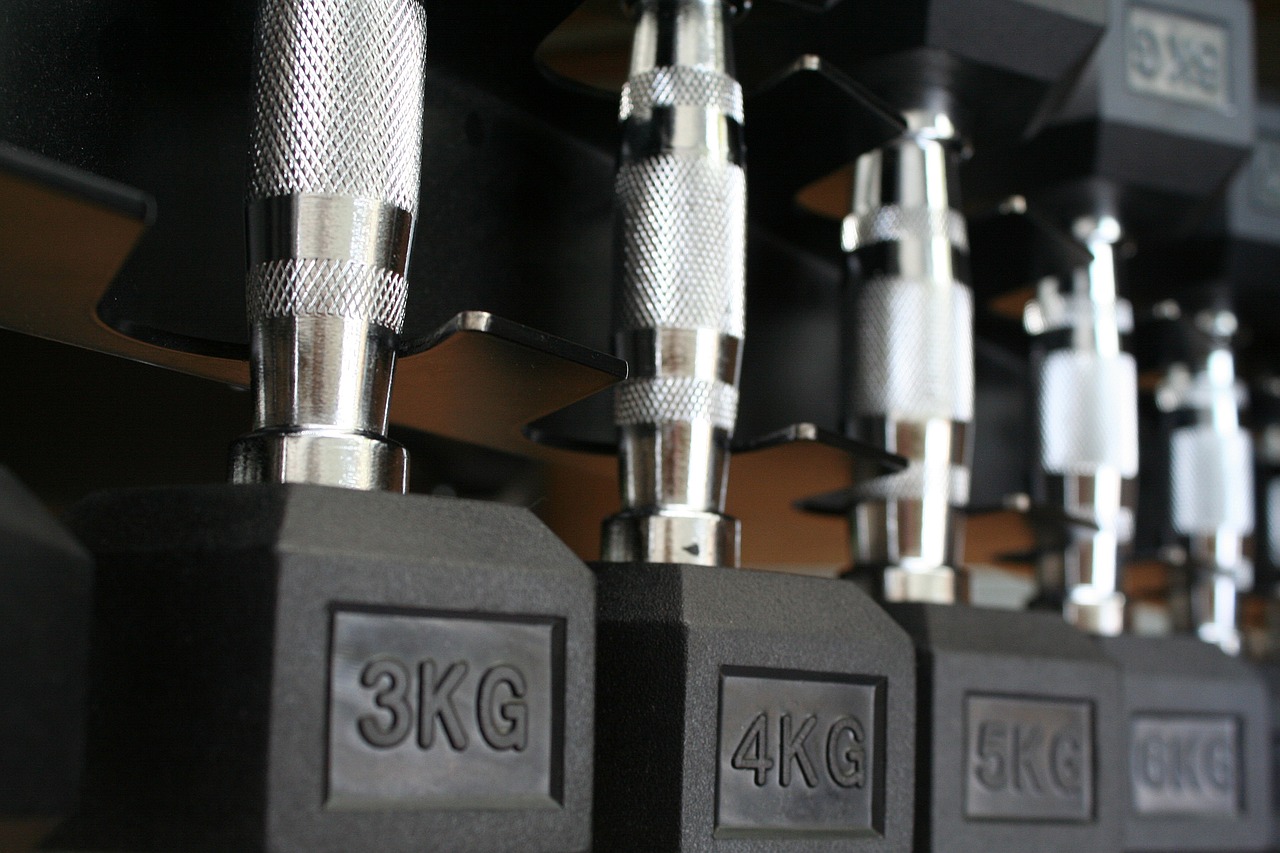
Core Strengthening Exercises
When it comes to self-defense, having a strong core isn't just a nice-to-have; it's a necessity. Core strengthening exercises are the backbone of a solid self-defense training routine. These exercises not only enhance your physical abilities but also build confidence in your movements. Think of your core as the engine of a car. Without a powerful engine, even the most stylish car won't go far. Similarly, without a strong core, your self-defense techniques will lack the necessary power and efficiency.
There are various types of core strengthening exercises that can be easily integrated into your training regimen. Let's break them down into two main categories: bodyweight exercises and weighted exercises. Both have their unique benefits and can be tailored to fit your individual fitness level.
Bodyweight exercises are fantastic for building core strength because they can be done anywhere and require no special equipment. Here are some effective bodyweight exercises that can significantly enhance your core stability and strength:
- Planks: This classic exercise engages multiple muscle groups, especially the core. Aim to hold a plank position for at least 30 seconds, gradually increasing the duration as you become stronger.
- Mountain Climbers: This dynamic movement not only works your core but also gets your heart rate up. Start in a plank position and alternate bringing your knees to your chest.
- Russian Twists: Sit on the floor with your knees bent, lean back slightly, and twist your torso to touch the ground beside you. This exercise targets your obliques and improves rotational strength.
Incorporating these exercises into your routine can lead to remarkable improvements in your core strength, which translates directly to better self-defense skills. As you practice these movements, focus on maintaining proper form to maximize effectiveness and minimize injury risk.
If you're looking to take your core training to the next level, adding weights can be incredibly beneficial. Weighted exercises can help increase muscle strength and endurance, making your self-defense techniques even more powerful. Here are a few weighted core exercises to consider:
- Medicine Ball Slams: This explosive movement not only works your core but also enhances your overall power. Lift a medicine ball overhead and slam it down to the ground with force.
- Dumbbell Side Bends: Holding a dumbbell in one hand, lean to the side while keeping your core engaged. This exercise targets the obliques and improves lateral strength.
- Weighted Planks: Adding a weight plate on your back while performing a plank can significantly increase the challenge and effectiveness of the exercise.
Incorporating these weighted exercises into your training will not only enhance your core strength but also improve your overall athletic performance. Remember to start with lighter weights and gradually increase as your strength improves. The key is to challenge yourself without compromising your form.
Ultimately, whether you choose bodyweight exercises or weighted movements, consistency is crucial. Aim to include core strengthening exercises in your self-defense training routine at least two to three times a week. Over time, you'll notice improvements not just in your core strength, but also in your balance, stability, and power during self-defense situations.
Q: How often should I train my core for self-defense?
A: It's recommended to train your core at least two to three times a week to see significant improvements. Consistency is key!
Q: Can I perform these exercises at home?
A: Absolutely! Most of the exercises mentioned can be done at home with little to no equipment required.
Q: How long should I hold a plank for optimal results?
A: Start with 30 seconds and gradually increase your hold time as your strength improves. Aim for up to 1-2 minutes as you progress.
Q: Is it necessary to use weights for core training?
A: While weights can enhance your core training, bodyweight exercises are also highly effective. Choose what works best for you and your fitness level.
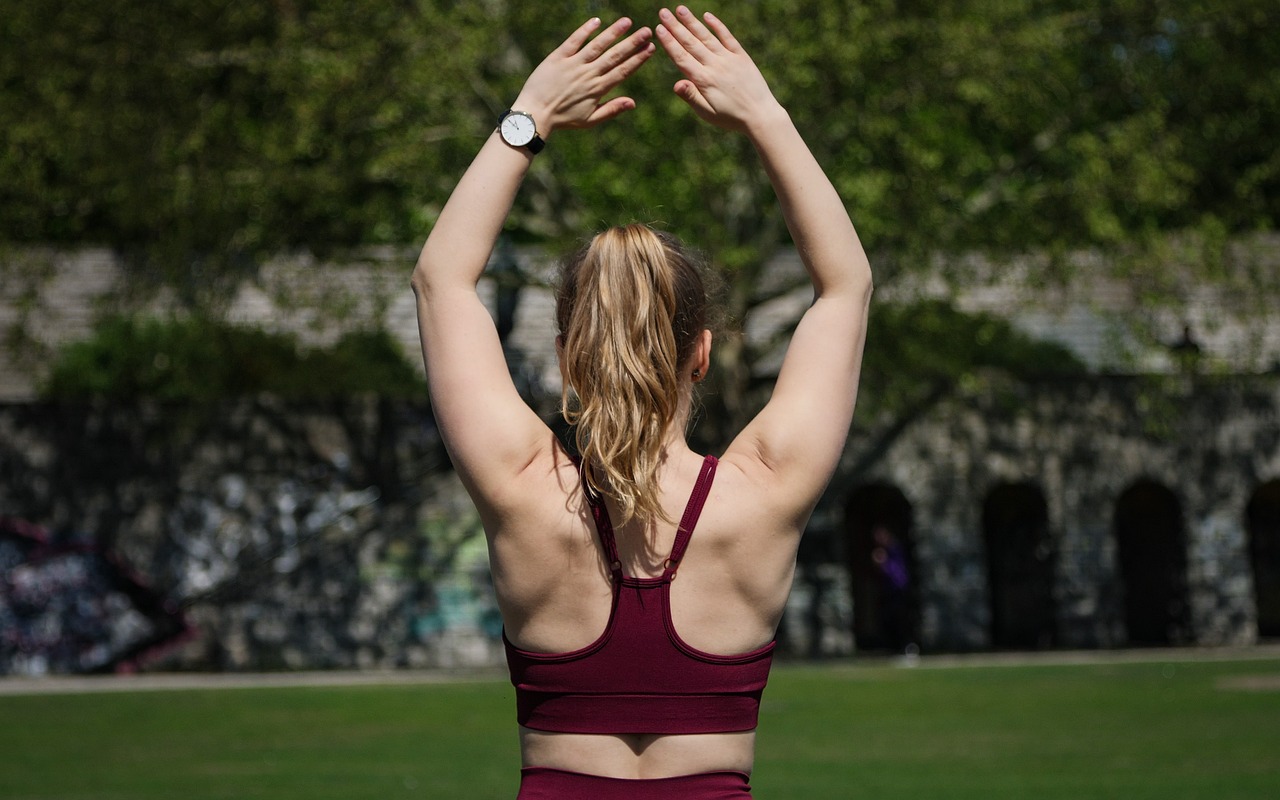
Bodyweight Exercises
When it comes to building core strength, are not only accessible but also incredibly effective. These exercises utilize your own body weight as resistance, making them perfect for anyone, regardless of fitness level. Imagine your body as a well-tuned machine; each part must work in harmony, and the core is the engine that powers everything. Without a strong engine, your machine can't perform at its best, especially in self-defense scenarios where quick, powerful movements are essential.
One of the greatest advantages of bodyweight exercises is that they can be performed anywhere, whether you're at home, in a park, or even at the gym. This flexibility allows you to incorporate them into your daily routine easily, enhancing your core strength without the need for expensive equipment. Plus, they engage multiple muscle groups, which is fantastic for overall body conditioning. Think of them as a multi-tool for fitness; they’re versatile and can adapt to your needs.
Some of the most effective bodyweight exercises for core strength include:
- Planks: This classic exercise engages not just your core, but also your shoulders, back, and glutes, providing a solid foundation for all your movements.
- Mountain Climbers: A dynamic exercise that not only works your core but also boosts your heart rate, making it a great cardio workout.
- Russian Twists: This exercise targets your obliques, helping to improve rotational strength, which is crucial for delivering powerful strikes in self-defense.
- Burpees: While they might seem daunting, burpees are excellent for building overall strength and endurance, engaging your core throughout the movement.
Incorporating these exercises into your self-defense training routine can lead to significant improvements in your performance. For instance, performing planks regularly can enhance your stability, allowing you to maintain your balance during a defensive maneuver. Mountain climbers, on the other hand, can improve your agility and speed, enabling you to react quickly in high-stress situations.
To maximize the benefits of bodyweight exercises, consider creating a structured routine. You might start with a warm-up to get your blood flowing, followed by a circuit of bodyweight exercises that target your core. For example, you could rotate through planks, mountain climbers, and Russian twists for 30 seconds each, resting for 15 seconds in between. This kind of high-intensity interval training (HIIT) not only builds strength but also improves your cardiovascular fitness, making you more resilient in self-defense scenarios.
In conclusion, bodyweight exercises are a fantastic way to build core strength, especially for self-defense practitioners. They are versatile, effective, and can be done anywhere, making them an essential part of any training regimen. Remember, the stronger your core, the more capable you are in defending yourself and executing techniques with power and precision.
Q: How often should I do bodyweight exercises to see results?
A: Ideally, aim for at least 2-3 times a week. Consistency is key! You might start with shorter sessions and gradually increase the duration and intensity.
Q: Can bodyweight exercises help with weight loss?
A: Absolutely! When combined with a balanced diet, bodyweight exercises can help you burn calories and build muscle, which can lead to weight loss.
Q: What if I'm a beginner and find these exercises too challenging?
A: Start slow! You can modify exercises to suit your current fitness level. For example, if a full plank is too difficult, try a knee plank instead.

Weighted Core Exercises
When it comes to enhancing your core strength, are a game changer. These exercises not only add resistance to your routine but also challenge your muscles in a way that bodyweight exercises alone may not. Imagine trying to lift a heavy box; it’s not just about your arms but also how well your core stabilizes your body during that lift. By integrating weights into your core workouts, you’ll find that your overall strength and stability improve significantly, which is crucial for effective self-defense.
To get started with weighted core exercises, you don't need a gym full of equipment. Simple tools like dumbbells, kettlebells, or even a medicine ball can make a huge difference. One of the most popular weighted core exercises is the Russian twist. This exercise not only targets the obliques but also engages the entire core. Here’s how you can perform it:
1. Sit on the ground with your knees bent and feet flat. 2. Hold a weight with both hands and lean back slightly. 3. Rotate your torso to the right, bringing the weight beside your hip. 4. Return to the center and rotate to the left. 5. Repeat for 10-15 reps on each side.
Another excellent exercise is the weighted plank. While a standard plank is fantastic for building endurance, adding weight increases the challenge and engages more muscles. To perform a weighted plank:
1. Get into a plank position with your forearms on the ground. 2. Have a partner place a weight plate on your back or use a weighted vest. 3. Hold the position for as long as you can, focusing on keeping your core tight and your body straight.
Incorporating these exercises into your training routine can yield impressive results. Not only will you notice an increase in your core strength, but you’ll also find that your ability to execute self-defense techniques improves dramatically. This is because a strong core is essential for generating the power needed in defensive actions.
For those looking to track their progress in weighted core exercises, consider keeping a log of the weights you use and the number of repetitions you complete. Over time, you can gradually increase the weights as your strength improves, ensuring that your muscles are constantly challenged. Below is a simple table to help you keep track of your weighted core exercises:
| Exercise | Weight Used | Repetitions | Date |
|---|---|---|---|
| Russian Twist | 10 lbs | 15 each side | MM/DD/YYYY |
| Weighted Plank | 15 lbs | 30 seconds | MM/DD/YYYY |
In conclusion, weighted core exercises are not just about lifting heavier; they are about creating a foundation of strength that enhances your overall performance in self-defense scenarios. By incorporating these exercises into your routine, you’ll not only improve your core strength but also enhance your confidence and ability to respond effectively in challenging situations.
- What are the best weights to start with for core exercises? It's recommended to start with lighter weights, such as 5-10 lbs, and gradually increase as you build strength.
- How often should I do weighted core exercises? Aim for 2-3 times a week, allowing your muscles to recover in between sessions.
- Can I perform weighted core exercises at home? Absolutely! Many weighted core exercises can be done at home with minimal equipment.
Frequently Asked Questions
- What is core strength and why is it important for self-defense?
Core strength refers to the stability and strength of the muscles in your abdomen, lower back, and pelvis. It's essential for self-defense because a strong core enhances your balance, stability, and power during defensive maneuvers. Think of your core as the foundation of a house; if it's weak, the entire structure is at risk!
- How can I improve my core strength for self-defense?
You can improve your core strength through various exercises, including bodyweight movements like planks and sit-ups, as well as weighted exercises such as medicine ball twists. Incorporating these into your routine not only builds strength but also prepares you for real-life self-defense situations.
- What are some exercises specifically designed for balance and stability?
Exercises like single-leg stands, stability ball exercises, and yoga poses such as Tree Pose can significantly enhance your balance and stability. These exercises help you maintain control during quick movements, which is crucial when defending yourself.
- Can core training reduce my risk of injury?
Absolutely! A strong core helps stabilize your body, reducing the likelihood of injuries during physical activities. It acts like a protective shield, allowing you to move more efficiently and safely, whether you're training or facing real-life challenges.
- How does core strength contribute to power generation in self-defense techniques?
A strong core is like the engine of a car; it powers your movements. When you strike or defend, the force generated from your core translates into more powerful and effective actions. This means that with a solid core, your self-defense techniques become much more impactful.
- What are some bodyweight exercises I can do to strengthen my core?
Some effective bodyweight exercises include planks, mountain climbers, and bicycle crunches. These exercises are not only convenient but also highly effective for building the core strength necessary for self-defense.
- Are weighted exercises necessary for core training?
While bodyweight exercises are great, incorporating weighted exercises can take your core strength to the next level. Movements like kettlebell swings and weighted sit-ups add resistance, which can enhance your overall strength and self-defense capabilities.


